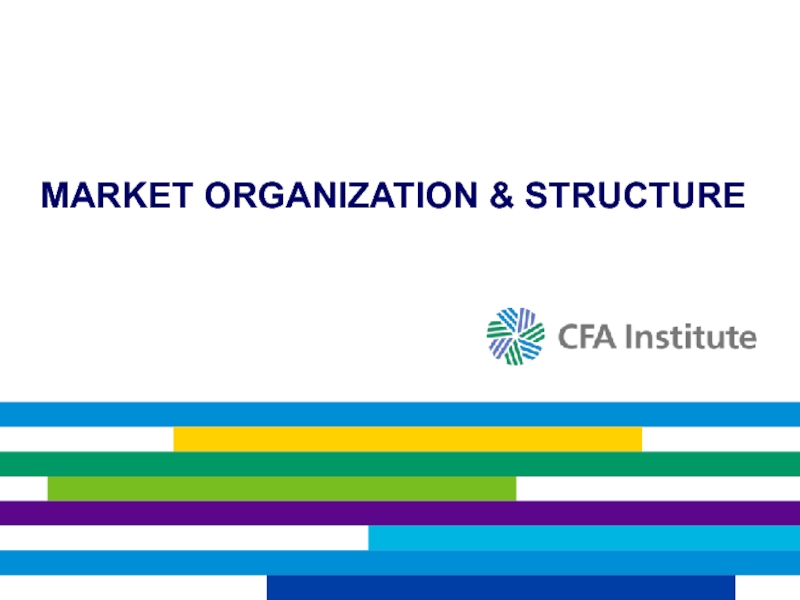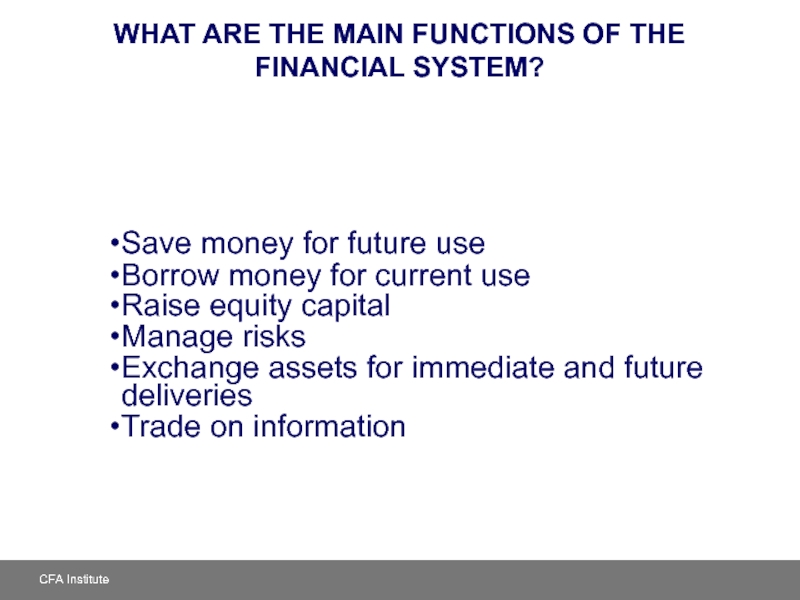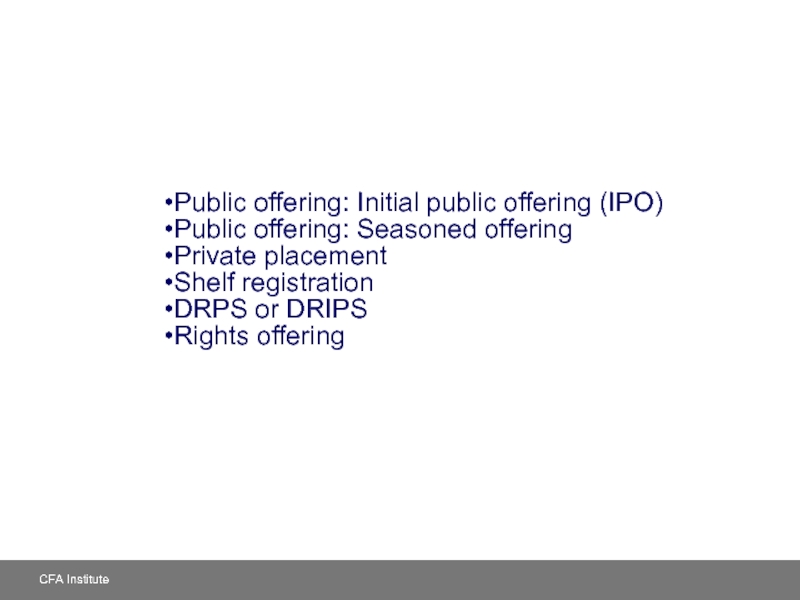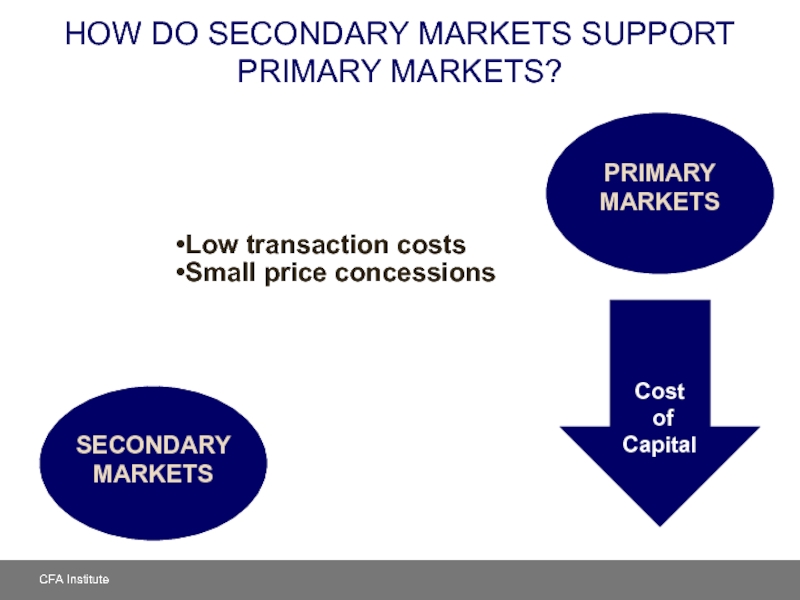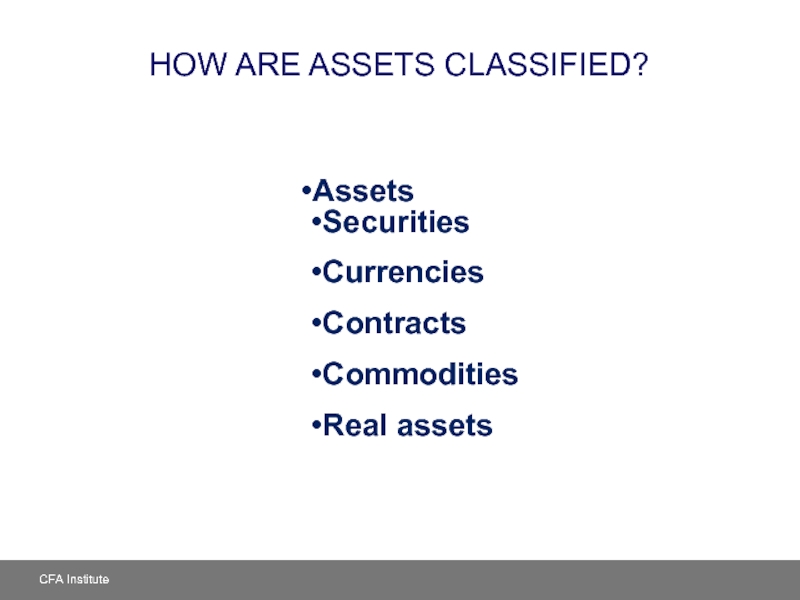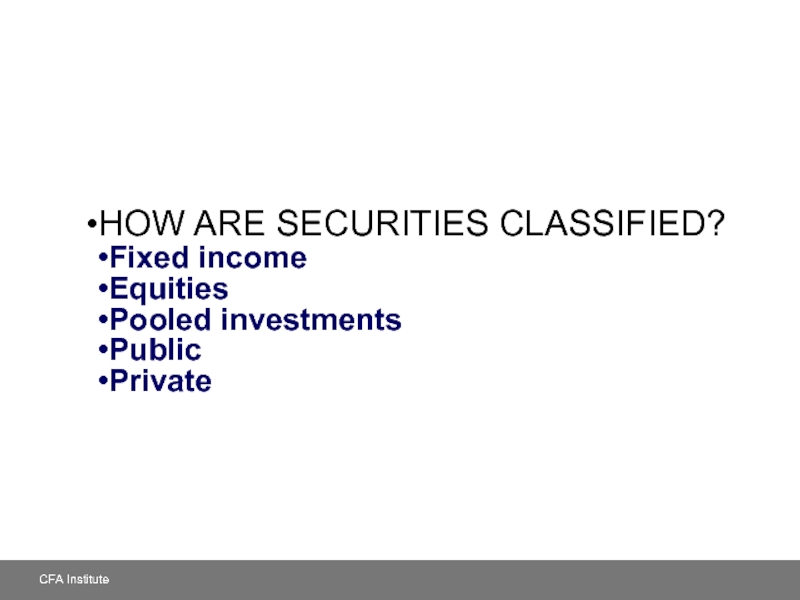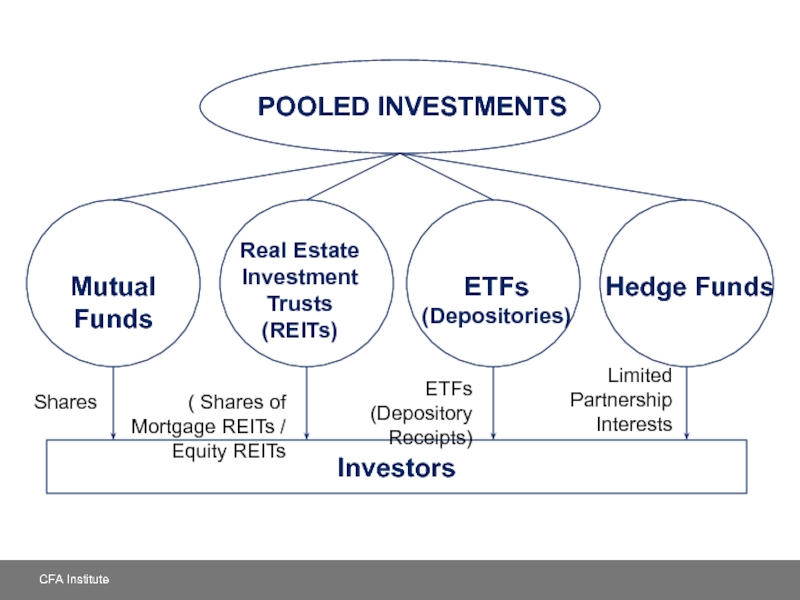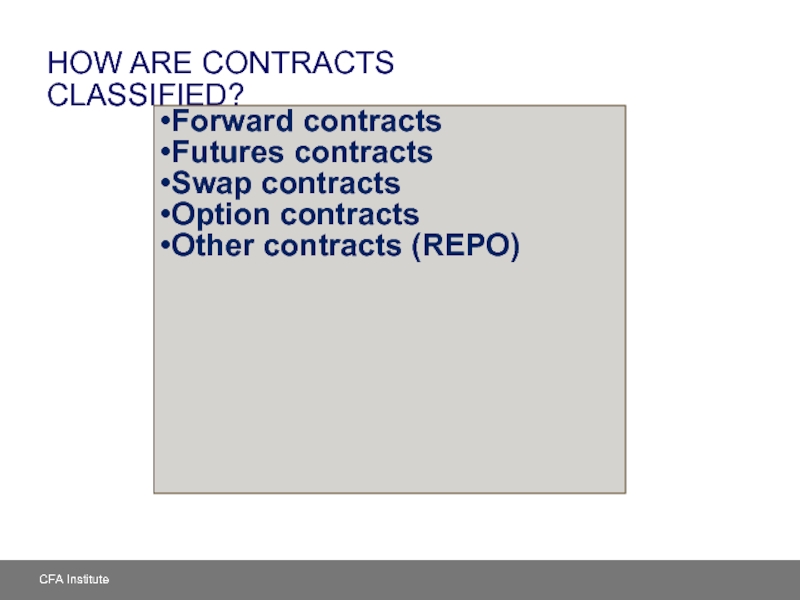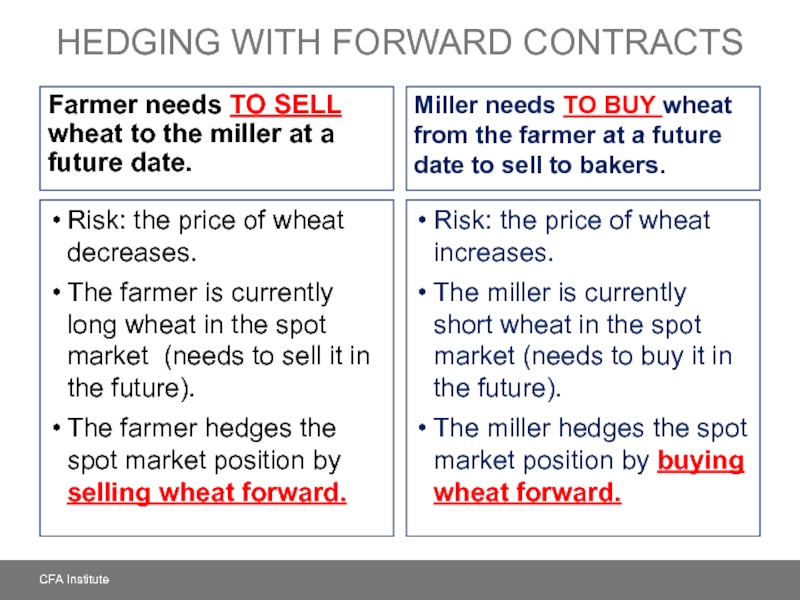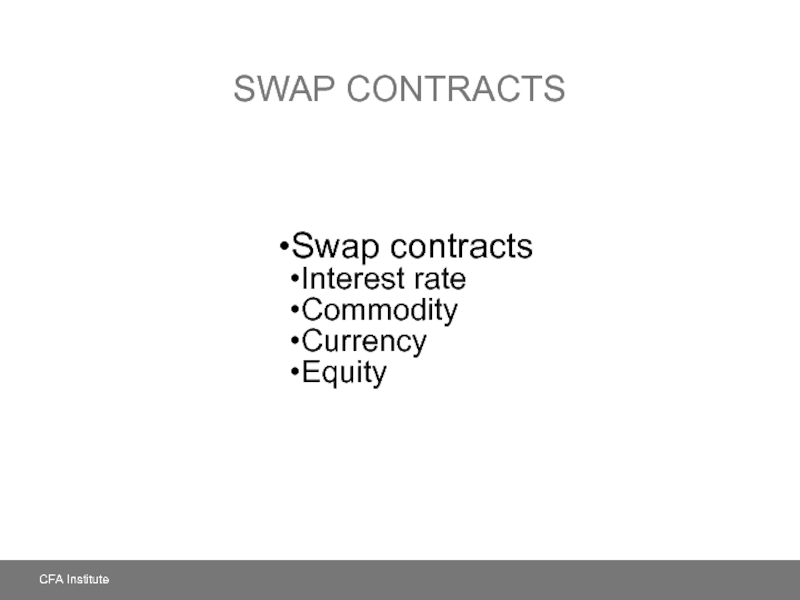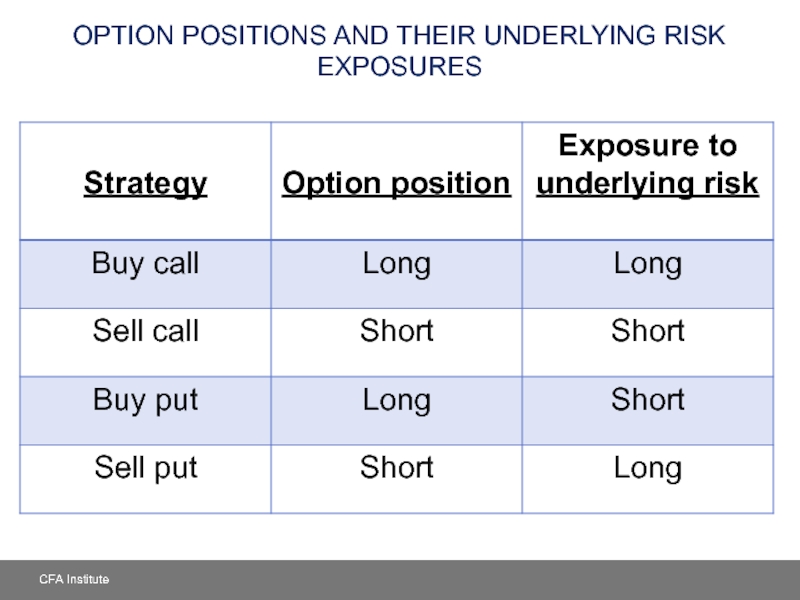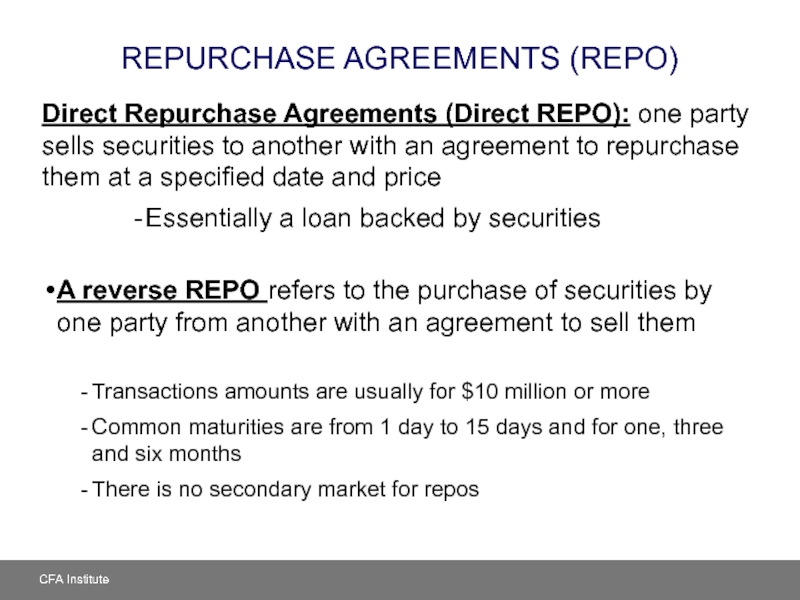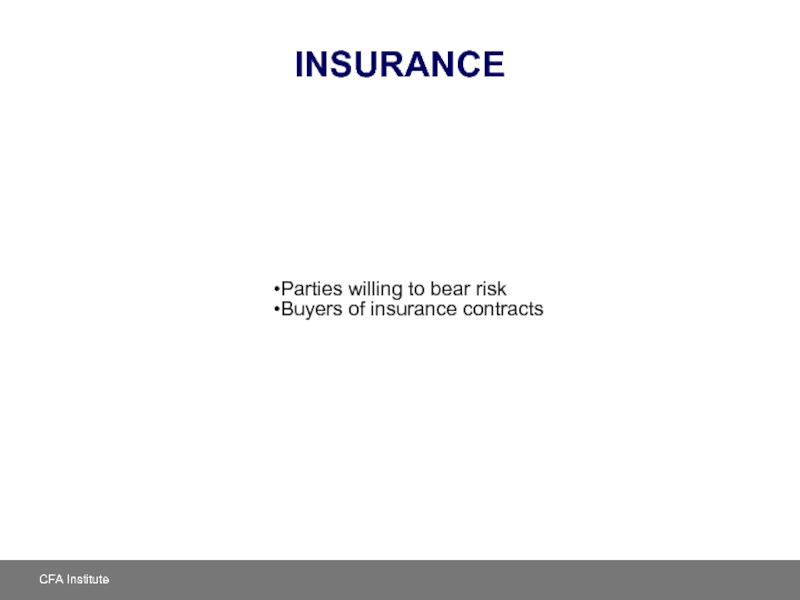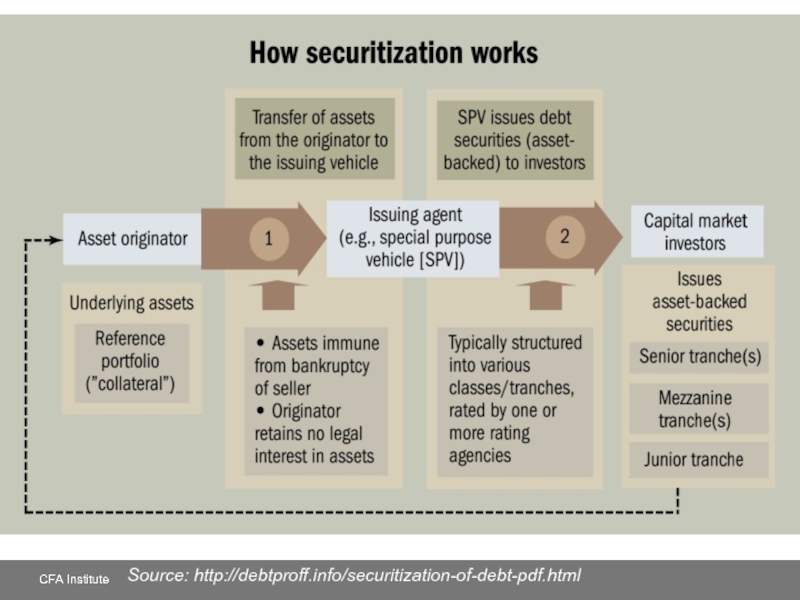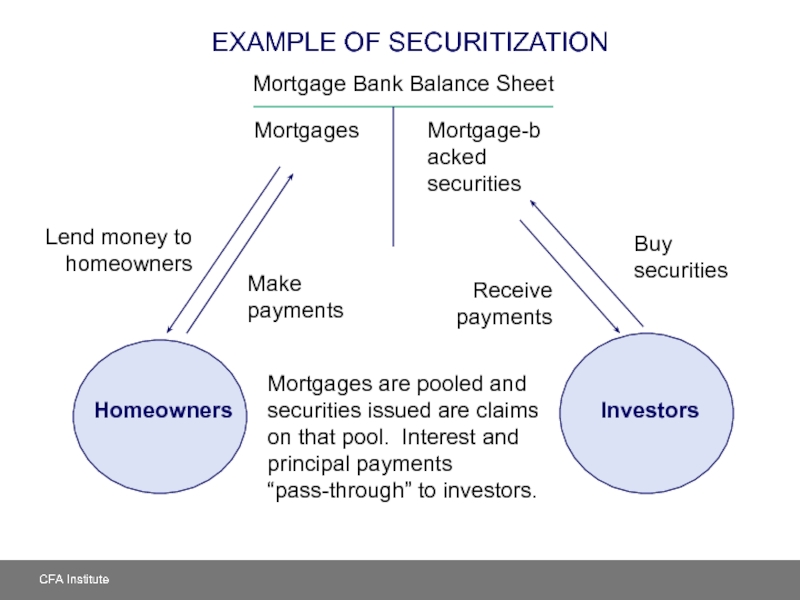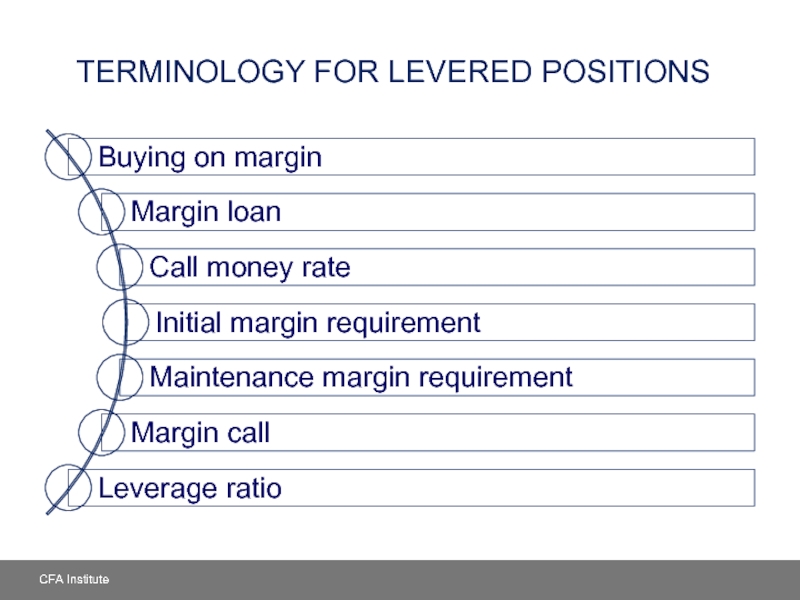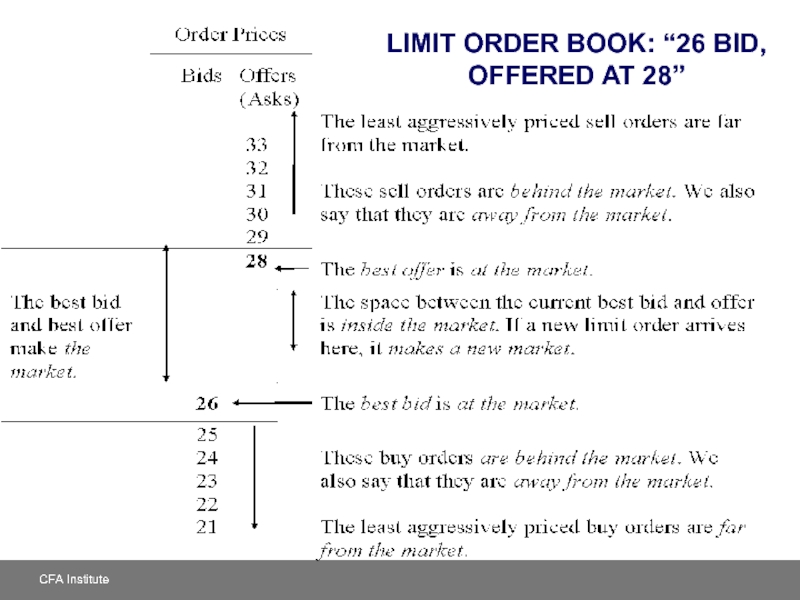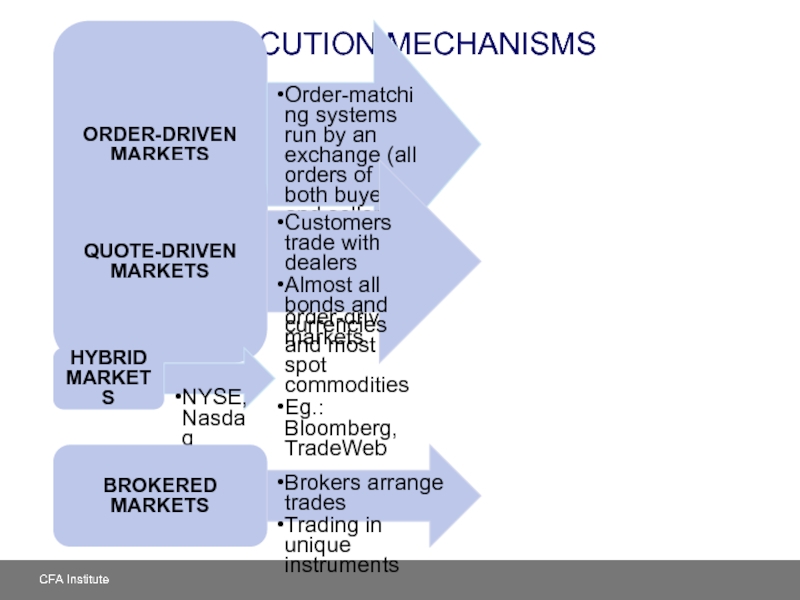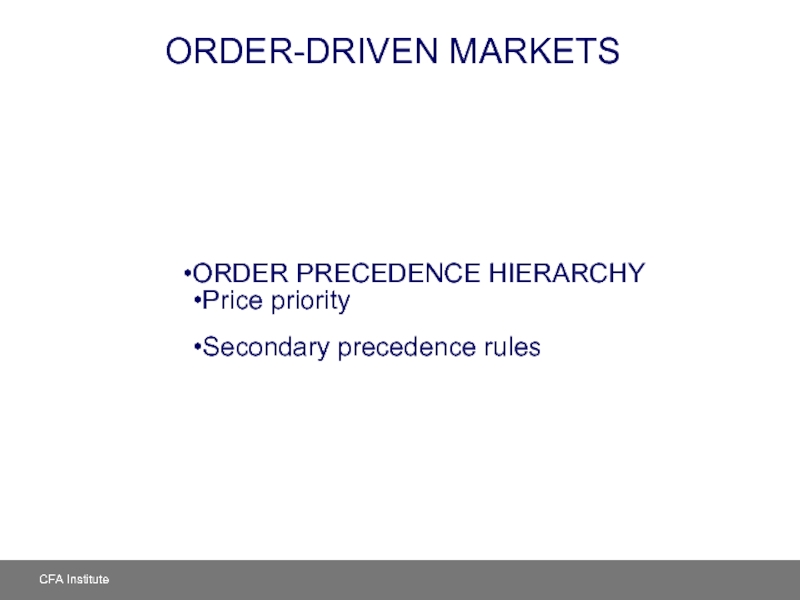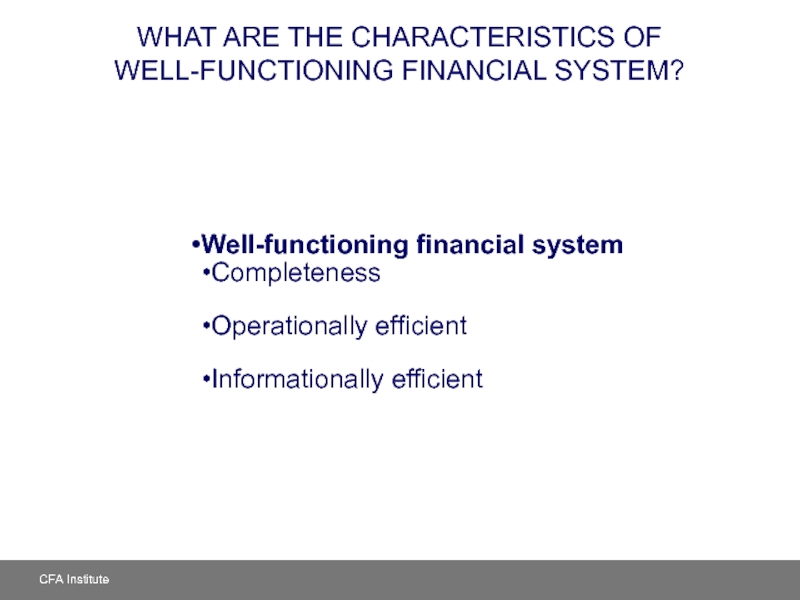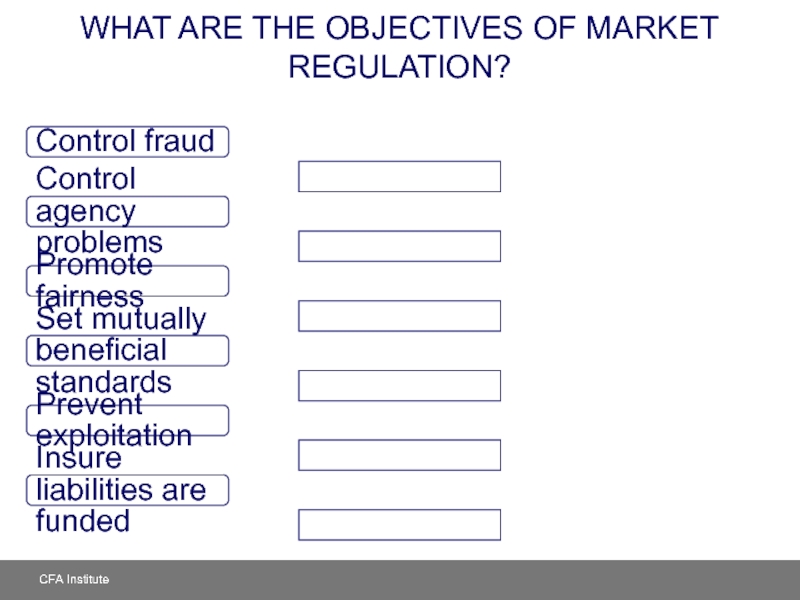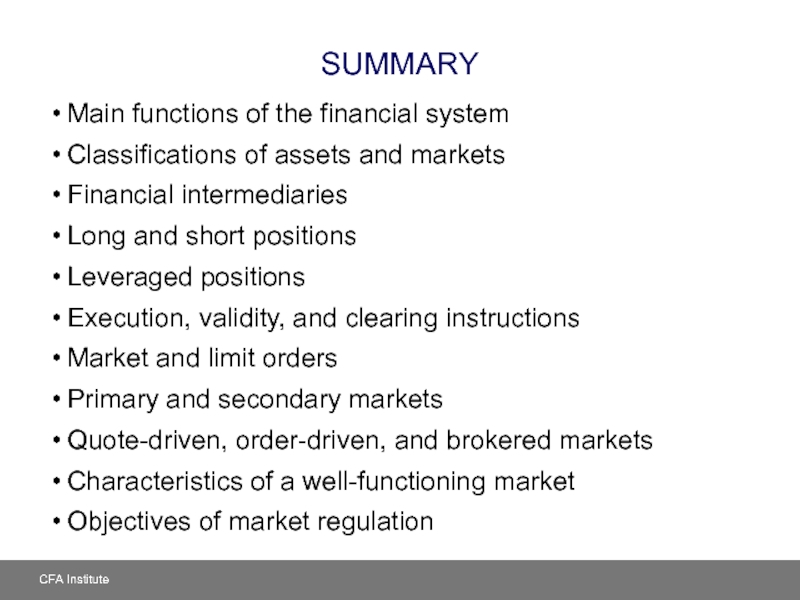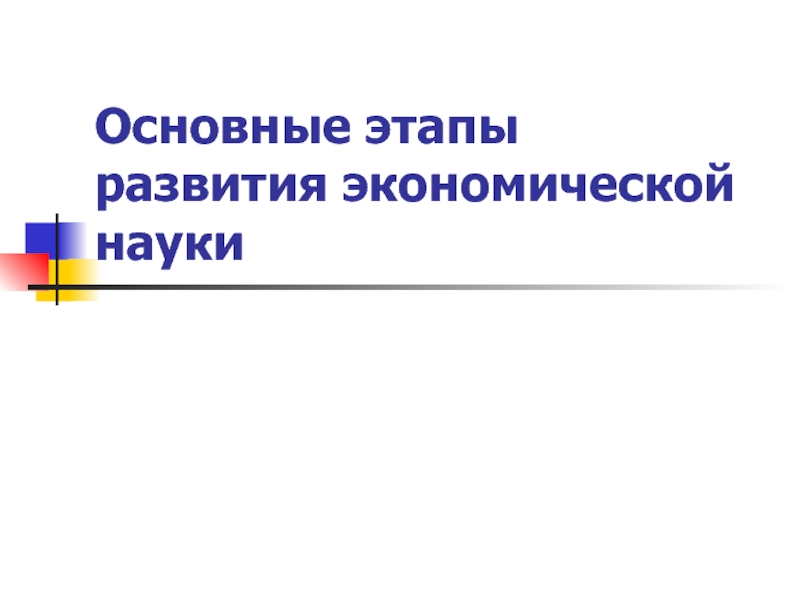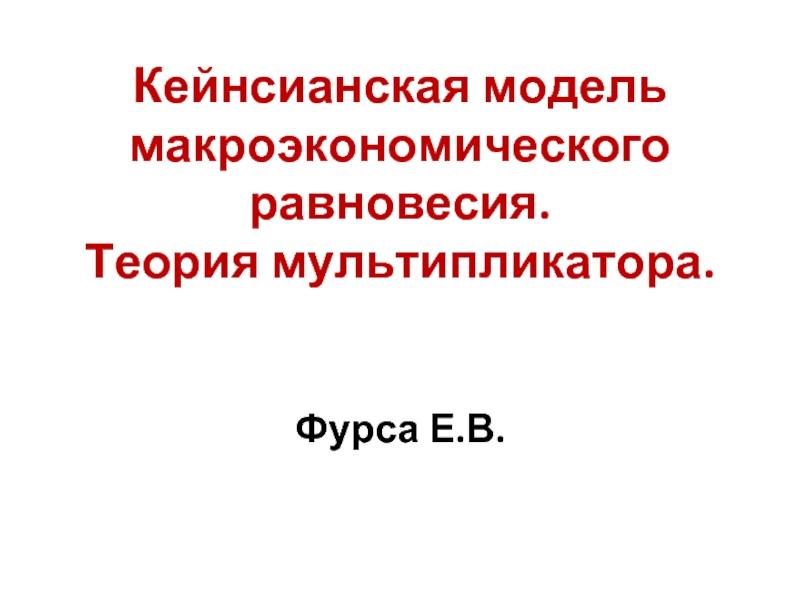- Главная
- Разное
- Дизайн
- Бизнес и предпринимательство
- Аналитика
- Образование
- Развлечения
- Красота и здоровье
- Финансы
- Государство
- Путешествия
- Спорт
- Недвижимость
- Армия
- Графика
- Культурология
- Еда и кулинария
- Лингвистика
- Английский язык
- Астрономия
- Алгебра
- Биология
- География
- Детские презентации
- Информатика
- История
- Литература
- Маркетинг
- Математика
- Медицина
- Менеджмент
- Музыка
- МХК
- Немецкий язык
- ОБЖ
- Обществознание
- Окружающий мир
- Педагогика
- Русский язык
- Технология
- Физика
- Философия
- Химия
- Шаблоны, картинки для презентаций
- Экология
- Экономика
- Юриспруденция
Market Organization and Structure презентация
Содержание
- 1. Market Organization and Structure
- 2. WHAT ARE THE MAIN FUNCTIONS OF THE
- 3. HOW ARE MARKETS CLASSIFIED? Category 1
- 4. PRIMARY MARKET Public offering: Initial public offering
- 5. HOW DO SECONDARY MARKETS SUPPORT PRIMARY MARKETS?
- 6. HOW ARE ASSETS CLASSIFIED? Assets Securities
- 7. HOW ARE SECURITIES CLASSIFIED? Fixed income Equities Pooled investments Public Private
- 8. POOLED INVESTMENTS
- 9. WHAT POSITIONS CAN I TAKE IN AN
- 10. HOW ARE CONTRACTS CLASSIFIED?
- 11. HEDGING WITH FORWARD CONTRACTS Farmer needs TO
- 12. FUTURES VERSUS FORWARD CONTRACTS FUTURES CONTRACTS Standardized
- 13. SWAP CONTRACTS Swap contracts Interest rate Commodity Currency Equity
- 15. OPTION POSITIONS AND THEIR UNDERLYING RISK EXPOSURES
- 16. REPURCHASE AGREEMENTS (REPO) Direct Repurchase Agreements (Direct
- 17. INSURANCE Parties willing to bear risk Buyers of insurance contracts
- 18. CREDIT DEFAULT SWAPS (CDS)
- 19. Source: http://debtproff.info/securitization-of-debt-pdf.html
- 20. EXAMPLE OF SECURITIZATION Mortgage-backed securities Mortgages Mortgage
- 21. Source: http://awesome-b5.website/loan-to-value-definition-mortgage-backed
- 22. TERMINOLOGY FOR LEVERED POSITIONS
- 23. EXAMPLE: COMPUTING TOTAL RETURN TO A LEVERAGED
- 24. EXAMPLE: MARGIN CALL PRICE A trader
- 25. COMPARE AND CONTRAST EXECUTION, VALIDITY, AND CLEARING INSTRUCTIONS
- 26. EXECUTION INSTRUCTIONS Execution instructions specify how to
- 27. LIMIT ORDER BOOK: “26 BID, OFFERED AT 28”
- 28. VALIDITY INSTRUCTIONS Day order Good-till-cancelled order
- 29. STOP ORDERS (STOP-LOSS ORDERS) STOP-SELL ORDER: Sell at $30
- 30. EXECUTION MECHANISMS ORDER-DRIVEN MARKETS Order-matching systems run
- 31. ORDER-DRIVEN MARKETS ORDER PRECEDENCE HIERARCHY Price priority Secondary precedence rules
- 32. WHAT ARE THE CHARACTERISTICS OF WELL-FUNCTIONING FINANCIAL
- 33. WHAT ARE THE OBJECTIVES OF MARKET REGULATION?
- 34. SUMMARY Main functions of the financial system
Слайд 2WHAT ARE THE MAIN FUNCTIONS OF THE FINANCIAL SYSTEM?
Save money for
Borrow money for current use
Raise equity capital
Manage risks
Exchange assets for immediate and future deliveries
Trade on information
Слайд 3HOW ARE MARKETS CLASSIFIED?
Category 1
Spot markets
Forward and futures markets
Options markets
Category 2
Primary
Secondary markets
Category 3
Money markets
Capital markets
Category 4
Traditional investment markets
Alternative investment markets
Слайд 4PRIMARY MARKET
Public offering: Initial public offering (IPO)
Public offering: Seasoned offering
Private placement
Shelf
DRPS or DRIPS
Rights offering
Слайд 5HOW DO SECONDARY MARKETS SUPPORT PRIMARY MARKETS?
Low transaction costs
Small price concessions
SECONDARY
PRIMARY MARKETS
Cost
of
Capital
Слайд 8
POOLED INVESTMENTS
ETFs
(Depositories)
Investors
Hedge Funds
Real Estate Investment Trusts
(REITs)
Mutual Funds
Limited
Partnership
Interests
ETFs (Depository
Receipts)
( Shares
Shares
Слайд 9WHAT POSITIONS CAN I TAKE IN AN ASSET?
Long positions
Assets or contracts
Position benefits from price appreciation
Short positions
Assets not owned are sold or contracts are sold
Position benefits from a decrease in price
Слайд 10HOW ARE CONTRACTS CLASSIFIED?
Forward contracts
Futures contracts
Swap contracts
Option contracts
Other contracts (REPO)
Слайд 11HEDGING WITH FORWARD CONTRACTS
Farmer needs TO SELL wheat to the miller
Risk: the price of wheat decreases.
The farmer is currently long wheat in the spot market (needs to sell it in the future).
The farmer hedges the spot market position by selling wheat forward.
Miller needs TO BUY wheat from the farmer at a future date to sell to bakers.
Risk: the price of wheat increases.
The miller is currently short wheat in the spot market (needs to buy it in the future).
The miller hedges the spot market position by buying wheat forward.
Слайд 12FUTURES VERSUS FORWARD CONTRACTS
FUTURES CONTRACTS
Standardized
Clearinghouse guarantees performance
Strong secondary markets
FORWARD CONTRACTS
Customized
Counterparty risk
Typically
Слайд 16REPURCHASE AGREEMENTS (REPO)
Direct Repurchase Agreements (Direct REPO): one party sells securities
Essentially a loan backed by securities
A reverse REPO refers to the purchase of securities by one party from another with an agreement to sell them
Transactions amounts are usually for $10 million or more
Common maturities are from 1 day to 15 days and for one, three and six months
There is no secondary market for repos
Слайд 18CREDIT DEFAULT SWAPS (CDS)
Protection buyer
Protection seller
Protection buyer
Premium
Protection against default
Protection seller
Prior to
In the event of default
Deliverable obligation (physical settlement) or nothing (cash settlement)
Par (physical settlement) or par less recovery value (cash settlement)
Слайд 20EXAMPLE OF SECURITIZATION
Mortgage-backed securities
Mortgages
Mortgage Bank Balance Sheet
Homeowners
Lend money to homeowners
Mortgages are
Investors
Buy securities
Make payments
Receive
payments
Слайд 23EXAMPLE: COMPUTING TOTAL RETURN TO A LEVERAGED STOCK PURCHASE
A buyer buys
Purchase price $20/share Sale price $15/share
Shares purchased 1,000 Leverage ratio 2.5
Call money rate 5% Dividend $0.10/share
Commission $0.01/share
1. What is the total return on this investment?
2. Why is the loss greater than the 25 percent decrease in the market price?
Слайд 24EXAMPLE: MARGIN CALL PRICE
A trader buys stock on margin posting 40
Слайд 26EXECUTION INSTRUCTIONS
Execution instructions specify how to trade
A MARKET ORDER instructs the
A LIMIT ORDER places a minimum execution price on sell orders and a maximum execution price on buy orders
Execution instructions about volume of trade: all-or-nothing orders: execute only if the whole order can be filled. Orders can specify the minimum size of the trade
Trade visibility can also be specified. Hidden orders are those for which only the broker or exchange knows the trade size
Trades can also specify displace size, where some of the trade is visible to the market, but the rest is not (Iceberg orders)
Слайд 28VALIDITY INSTRUCTIONS
Day order
Good-till-cancelled order (GTC)
Immediate-or-cancel order (IOC)
Good-on-close order
Good-on-open order
Stop orders (stop-loss
Слайд 30EXECUTION MECHANISMS
ORDER-DRIVEN MARKETS
Order-matching systems run by an exchange (all orders of
Stocks typically trade in order-driven markets
QUOTE-DRIVEN MARKETS
Customers trade with dealers
Almost all bonds and currencies and most spot commodities
Eg.: Bloomberg, TradeWeb
HYBRID MARKETS
NYSE, Nasdaq
BROKERED MARKETS
Brokers arrange trades
Trading in unique instruments
Слайд 32WHAT ARE THE CHARACTERISTICS OF WELL-FUNCTIONING FINANCIAL SYSTEM?
Well-functioning financial system
Completeness
Operationally efficient
Informationally
Слайд 33WHAT ARE THE OBJECTIVES OF MARKET REGULATION?
Control fraud
Control agency problems
Promote fairness
Set
Prevent exploitation
Insure liabilities are funded
Слайд 34SUMMARY
Main functions of the financial system
Classifications of assets and markets
Financial intermediaries
Long
Leveraged positions
Execution, validity, and clearing instructions
Market and limit orders
Primary and secondary markets
Quote-driven, order-driven, and brokered markets
Characteristics of a well-functioning market
Objectives of market regulation
